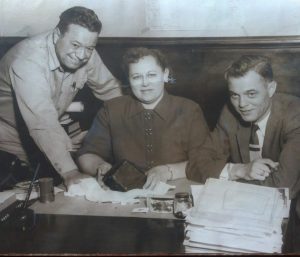The rocks and minerals collection of the Alabama Museum of Natural History is broad in scope and size, over 10,000 specimens. Most of the specimens were collected in the early days of the museum when it was affiliated with the Geological Survey of Alabama. The collection still retains some specimens collected by the first State Geologist and University of Alabama Professor, Michael Tuomey. After the Civil War, Tuomey’s position of State Geologist was succeeded by Eugene Allen Smith, who also left his mark on the Geology collection, having travelled across Alabama in a converted hospital wagon, collecting geological samples as a useful resource for industrial development throughout the state.
Some 500 mineral specimens include a world-wide collection from E. R. Schowalter of Point Clear, Alabama. Other foreign specimens of rocks and fossils were collected from Europe by the mineralogist, J. Lommel. The rest of the collection was acquired through purchases, gifts, exchanges and Museum staff collecting trips, numbering in the thousands and containing some fine pieces of exhibition, as well as educational, material.
Possibly our most noteworthy Geological specimen is the Sylacauga-Hodges Meteorite, which was acquired in 1956, almost two years after the fateful event that has endured as the only verifiable instance of a person being struck by a meteorite! Ann Hodges, an Alabama farm girl who sustained a large bruise and years of emotional turbulence, was the chosen target of the wayward comet. Her story has captivated people around the world, and has been retold in print, videos, plays, news articles, interviews, etc. One such video created by a Dutch videographer recounting the event can be accessed here: Ann Hodges: The Woman That Was Hit By A Meteorite. The Sylacauga meteorite can be seen on display in the Natural History Museum in Smith Hall.
Although the collection is seldom accessed for research, it is available for use by students and others with an interest in Geology, and will eventually be accessible online through the Arctos Database platform.
People:
- Dr. Adiel A. Klompmaker, Curator of Paleontology
- Brooke Bogan, Collections Manager of Natural History

